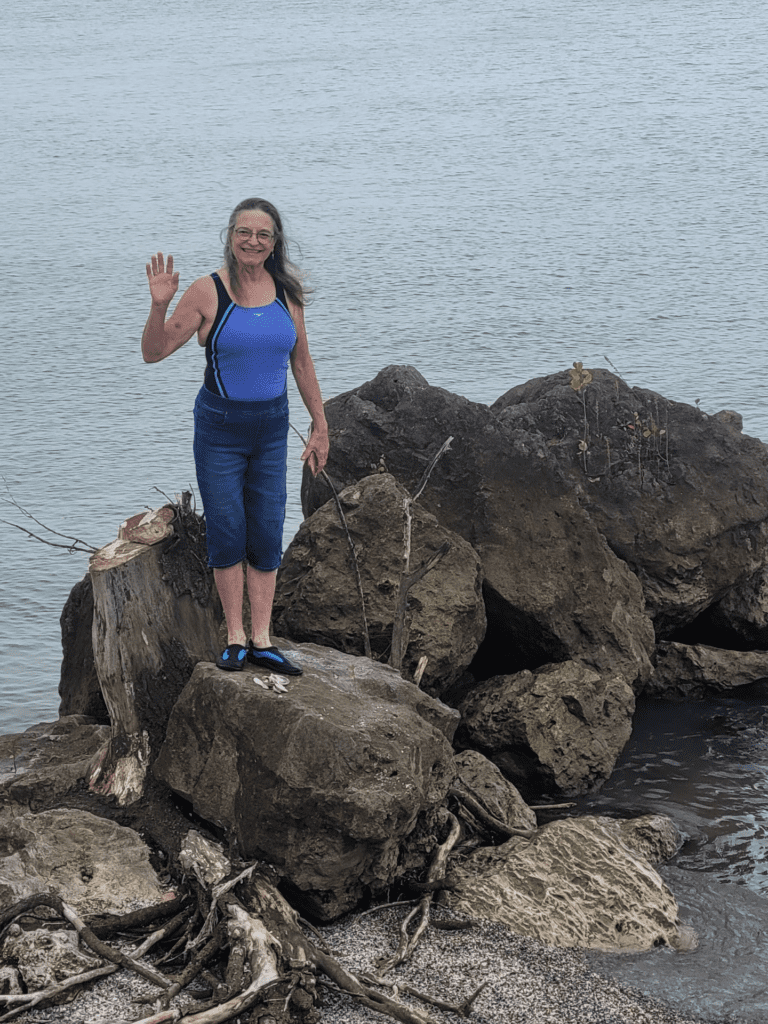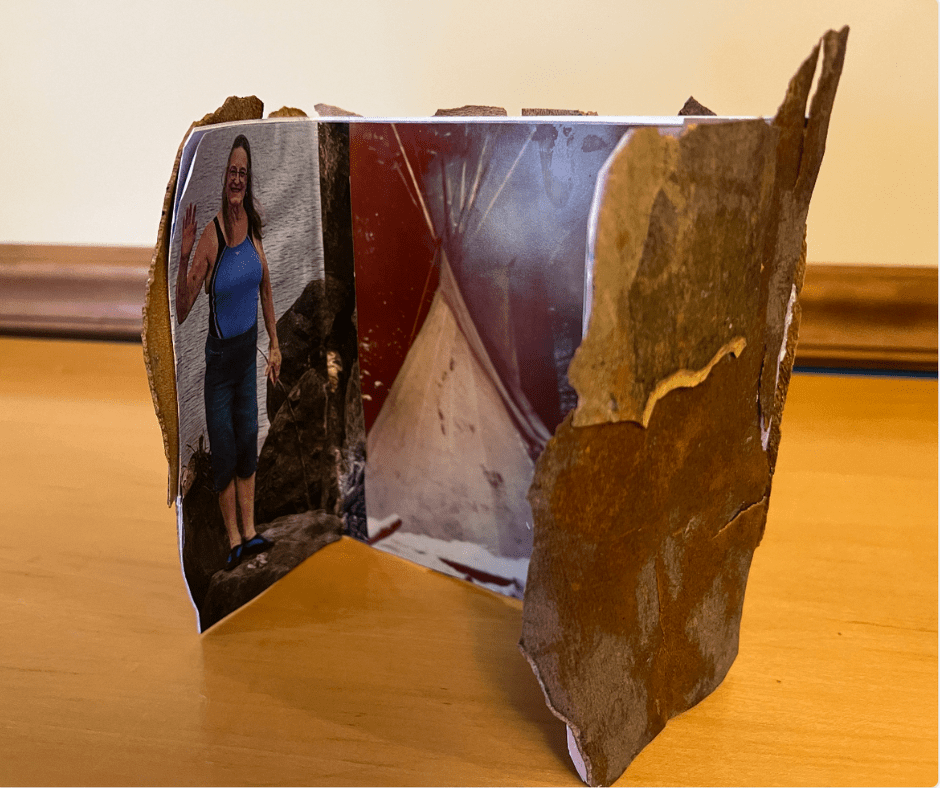
Last May, after writing and publishing a book on how art and artmaking help us grieve, I learned of the opening of the Contemporary Craft Museum’s art exhibit, Hereafter. I attended the opening which featured 13 regional artists exploring the themes of grief, mourning and the celebration of life. I was intrigued by the exhibit’s claim, “Craft objects have long been a vehicle for processing and understanding, and the act of creative expression itself can become an instrument for healing.”
A month later I organized a memorial mass in Texas for my sister Maureen, who died suddenly last December. In that process I had viewed a lot of pictures of her, having made a slideshow to share with her friends. Central to the celebration we shared stories, and I visited her home where I saw her personal space and the objects she held close to her in the life she was living. So, inspired by the artists, and these experiences, I was primed to attempt to craft an object of remembrance, or a small shrine to honor and remember her.
First off, I had to do what most everyone who wants to engage in an art form must do –overcome my lack of confidence. “I’m not a visual artist,” I say to myself. “I’m not as experienced and skilled as the artists in the exhibit.” Putting those truths aside, and beginning to explore the possibilities, I learn. “I had no idea there were that many types of glue.”
The process
As I thought about materials and the shape of what they could become I remembered the “keep -it-simple” notion that one of my mentors Cynthia Winton-Henry, a found objects visual artist as well as a dancer, author, and co-founder of InterPlay. She taught us about shrine making. She offered the notion of tri-folding a piece of paper so it could stand up and could be opened and closed. One ancient model of a shrine is of a box with a lid. The inside images or items can then be protected and private until you wish to view them. And that seems important as we move about our lives, taking time for reflection and memories, and then, putting them aside, to take care of ourselves and the business of our lives.
One of the artists in the exhibit Cheryl Capezzuti, provided inspiration by using residential dryer lint to create large bipedal armless figures with a hole in the center of their bodies where the heart would be. This pointed me in the direction of finding something that’s already being generated and plentiful yet seen as having little or no value. On a walk in my neighborhood after a dramatic storm that involved high winds and searing rain, I encountered the sidewalks and streets covered with exfoliated bark. This called attention to our Sycamore Trees.
I couldn’t resist collecting the large and small pieces of the multicolored thin wet bark occasionally perforated with holes. Maybe this wood could be useful as a covering for shrines. Researching Sycamore Trees I learned that the trees are the largest native to the eastern and central part of the United States and the longest lived. They can last 400 to 600 years. The wood is used for musical instruments and furniture, and the peeling bark is normal and a key ornamental characteristic. The bark starts out grayish brown but as the bark matures, the outer layer peels off in large sheets to reveal a lighter-colored, off-white inner layer. Exfoliating is a survival tool that eliminates unwanted pests such as scales and other insects and helps the trees rid themselves of bacteria, fungi, lichens, and mosses. This might be what’s helping the trees have such a long life.
So, I began a relationship with the thin layers of wood, learning how dry or wet they needed to be to become the outer container for my memorial images. Playing with images from my phone, and printer taught me the importance of scale and placement. At first my sister’s image overwhelmed, then becoming smaller, it settled into the side panel to remind me of a moment in time in 2021 when she was standing strong and waving happily from a rock outcropping on Lake Erie. We were there to memorialize our sister Pat, and she had just told me of a new love that had come into her life.
 The center of the trifold seemed to call for another kind of image, one that both my sister and I had in our private spaces. It was the image of a rented teepee in New Mexico which had been the home of our brother Ken when he was 26 years old. Seeing it now I recognize its importance to my sister’s entire life. Maureen had been 20 years old when she came to visit Ken at his invitation and found that he was not there, though he had been expecting her. The following day she discovered his dog shot dead on a trail nearby and surmised rightly that something awful had happened to him. It became awful for our entire family waiting and wondering what happened to him till several hunters found his body in the forest covered by two seasons of layered leaves. Dental records revealed that it was Ken, and that death had come from a gunshot wound at close range to his head. Nearly half a century later, I wonder if we gave Maureen enough support, experiencing such a traumatic event as such a young age.
The center of the trifold seemed to call for another kind of image, one that both my sister and I had in our private spaces. It was the image of a rented teepee in New Mexico which had been the home of our brother Ken when he was 26 years old. Seeing it now I recognize its importance to my sister’s entire life. Maureen had been 20 years old when she came to visit Ken at his invitation and found that he was not there, though he had been expecting her. The following day she discovered his dog shot dead on a trail nearby and surmised rightly that something awful had happened to him. It became awful for our entire family waiting and wondering what happened to him till several hunters found his body in the forest covered by two seasons of layered leaves. Dental records revealed that it was Ken, and that death had come from a gunshot wound at close range to his head. Nearly half a century later, I wonder if we gave Maureen enough support, experiencing such a traumatic event as such a young age.
As I send this blog off to be published tomorrow, I realize that August 8th 2024 would have been Maureen’s 70th birthday.
Happy Birthday dear one. I celebrate you by telling part of your story, enhanced by crafting an art object to always remember you.

